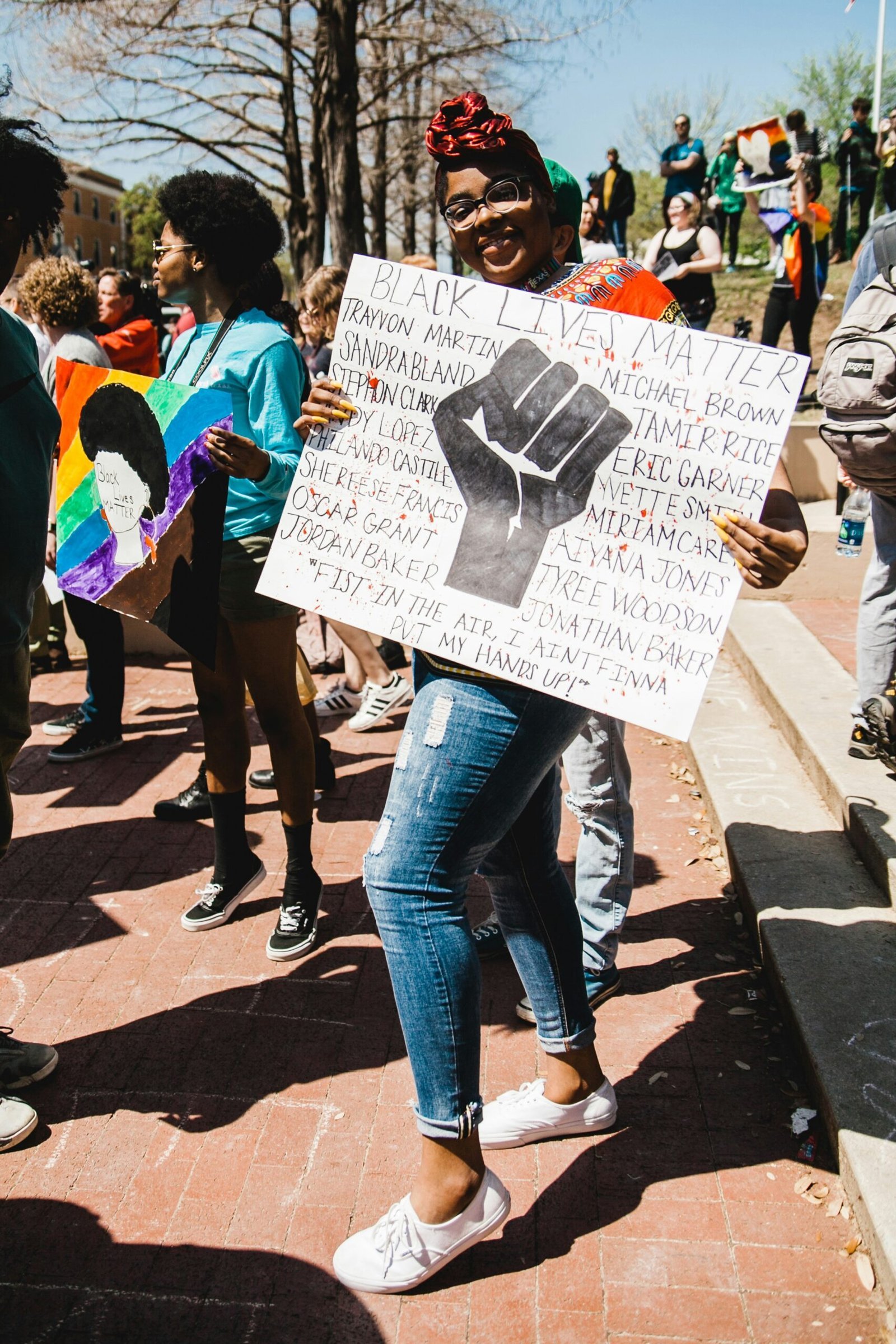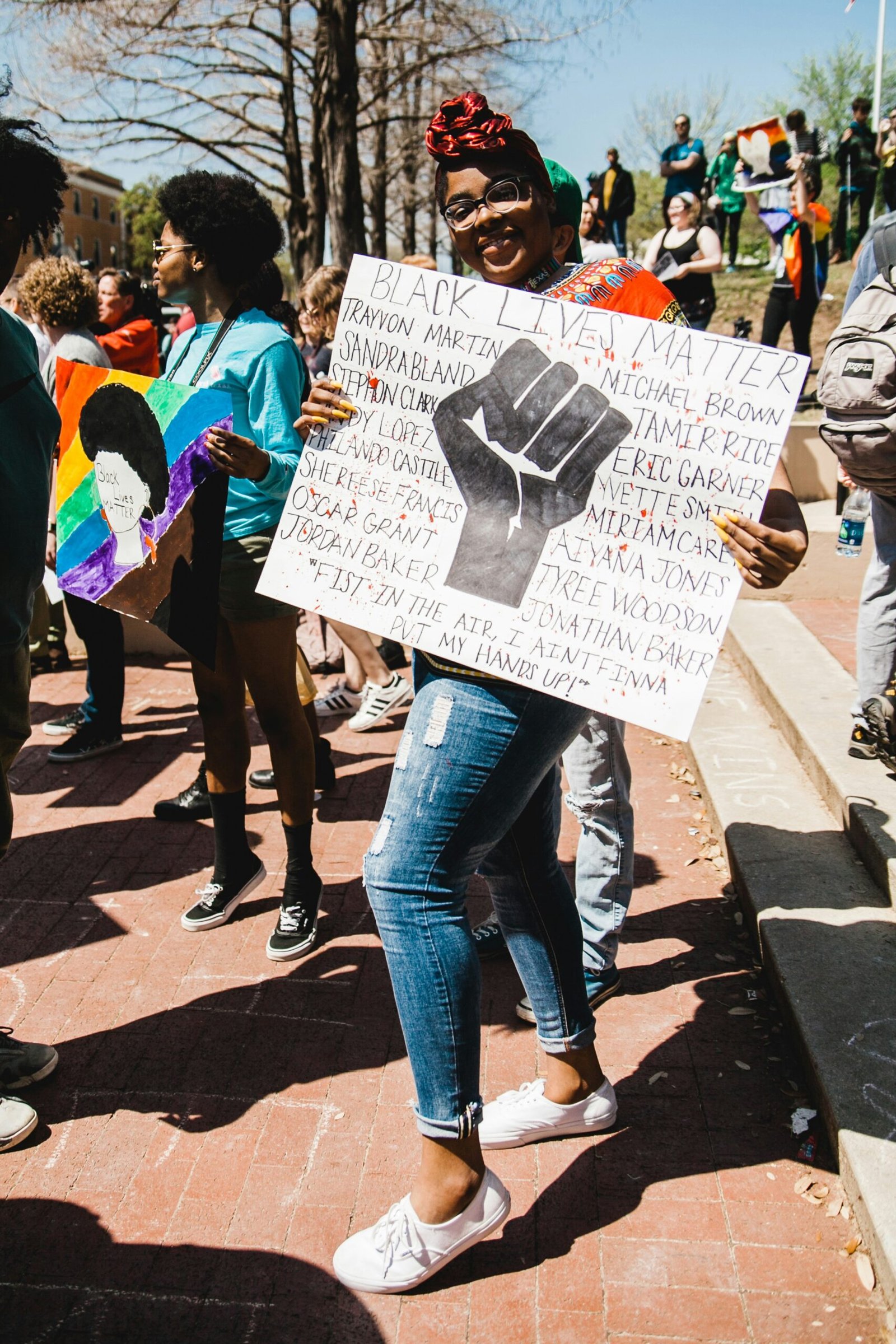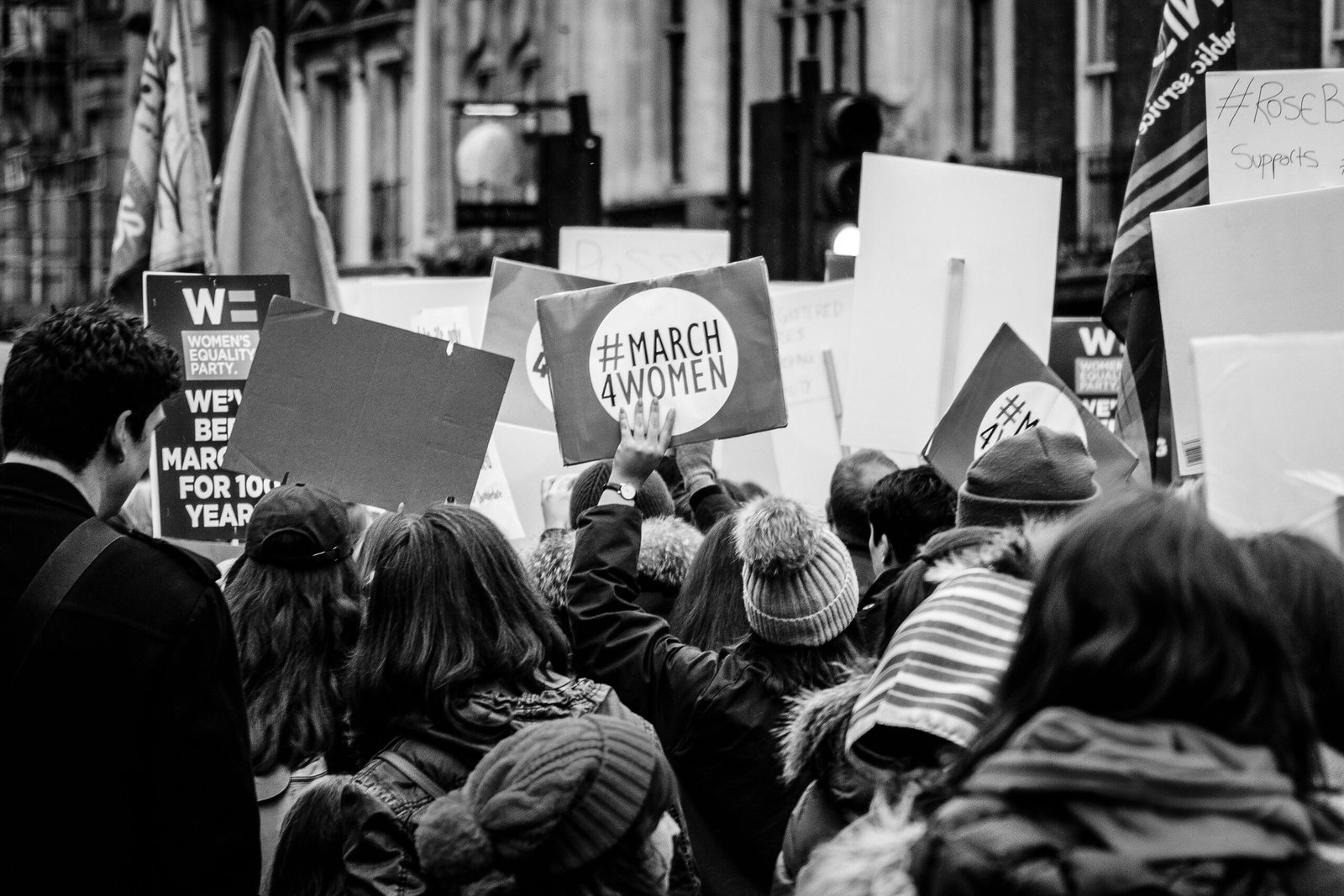
Introduction to Political Protests
Political protests have been an integral aspect of democratic societies, serving as a means for individuals and groups to express dissatisfaction and advocate for change. In the United States, these protests have a rich historical context that traces back to colonial times and has evolved through various socio-political movements. They represent the collective voice of marginalized groups, aiming to highlight issues such as racial injustice, inequality, and discrimination. Notably, Black Americans have played a pivotal role in these movements, utilizing protests to address systemic racism and advocate for civil rights.
The significance of political protests lies in their ability to draw attention to pressing social issues and mobilize public opinion. For Black Americans, these protests have provided a vital platform to articulate their grievances and push for legislative and societal changes. From the Civil Rights Movement of the 1960s to the recent Black Lives Matter movement, these protests have not only aimed to combat specific injustices but have also sought to empower Black communities, encouraging unity and resilience in the face of adversity.
This blog post aims to explore the nuanced responses of Black Americans to political protests, highlighting the diverse perspectives that exist within the community. Understanding these responses is crucial, as they reveal the complexities of social activism and the varying personal and communal motivations behind participation in protests. Ultimately, this discussion seeks to shed light on how political protests continue to shape the discourse around race and justice in America.
Historical Context of Protests in the Black Community
The history of protests within the Black community in the United States is a profound narrative of resistance, resilience, and activism that has evolved significantly over the decades. Beginning prominently with the Civil Rights Movement of the 1950s and 1960s, Black Americans galvanized around the struggle for equality and justice, challenging the systemic racism that had long oppressed them. Key figures such as Dr. Martin Luther King Jr., Malcolm X, and Rosa Parks became synonymous with this era, advocating for civil rights through non-violent protests, grassroots organizing, and powerful speeches that resonated on both national and global scales.
The passage of landmark legislation, such as the Civil Rights Act of 1964 and the Voting Rights Act of 1965, marked significant achievements in this fight for justice. However, even these victories did not eradicate racism or inequality. As economic disparities and institutional discrimination persisted, the Black community continued to engage in protest activities, adapting their methods to address emerging issues. Events such as the Watts riots in 1965 and the Stonewall riots in 1969 highlighted the intersectionality of race and other forms of social injustice, paving the way for a broader range of movements.
Fast forward to the 21st century, the emergence of the Black Lives Matter movement represents a pivotal point in contemporary protest history. Sparked by tragedies such as the deaths of Trayvon Martin, Michael Brown, and George Floyd, this movement has mobilized millions, both in the United States and globally, through innovative use of social media and grassroots organizing. The slogan “Black Lives Matter” encapsulates a powerful call to action, addressing systemic racism, police brutality, and social inequality. By examining these historical protests, one can appreciate the deep-rooted motivations driving the Black community’s ongoing activism and the significance of their responses to political injustices today.
The Role of Social Media in Mobilization
In recent years, social media has emerged as a powerful instrument for mobilizing Black Americans during political protests. Platforms such as Twitter, Instagram, and Facebook have revolutionized how individuals connect and organize around shared causes, fostering an unprecedented level of community engagement and activism. The rapid dissemination of information on these platforms allows for real-time updates about ongoing protests, enabling supporters to make informed decisions about participation and solidarity efforts.
Social media serves as a vital communication tool, bridging the gap between grassroots movements and national audiences. The use of hashtag campaigns, for instance, has proved effective in rallying support and raising awareness about crucial issues affecting the Black community, such as police brutality, racial injustice, and systemic inequality. Hashtags like #BlackLivesMatter have transcended local boundaries, fostering a broad coalition of advocates who unite under a common banner to demand change. This collective approach not only amplifies individual voices but also highlights the urgency of shared struggles on a national and even global scale.
The ability to document events through video and photography facilitates a deeper emotional connection to the issues at hand, motivating participation from those who may be otherwise disengaged. Stories and testimonials shared on social media platforms create a sense of urgency and empathy, encouraging individuals to take action in support of the movement. Furthermore, social media outreach helps to mobilize resources, organize fundraisers, and coordinate actions, effectively democratizing the process of activism. By harnessing the power of digital activism, Black Americans have shown that social media can be a crucial ally in the pursuit of equity and justice, drawing widespread attention to their causes and pushing for societal change.
Diverse Forms of Protest: From Marches to Art
The tradition of protest within the Black American community encompasses a wide array of methods, each serving as a vital tool for raising awareness and expressing collective grievance. Among the most visible forms of these protests are peaceful marches. Such demonstrations have been pivotal in advocating for civil rights, most notably during the Civil Rights Movement of the 1960s. Marches like the historic 1963 March on Washington not only galvanized public opinion but also showcased the power of unity in confronting social injustices. These gatherings remind society of the longstanding struggles faced by Black Americans, allowing them to vocalize their demands for justice and equality.
In addition to marches, sit-ins and boycotts have played a significant role in the protest repertoire. Sit-ins, where individuals occupy a space peacefully, challenge racial segregation and discriminatory practices by visibly asserting their right to those spaces. Boycotts, on the other hand, economically impact businesses or institutions that uphold systemic inequality. Both strategies demonstrate the community’s commitment to nonviolent resistance while effectively disrupting the status quo.
Artistic expressions further complement these traditional forms of protest. Music, visual arts, and literature allow Black Americans to convey their stories, struggles, and aspirations creatively. Songs like “Strange Fruit,” originally performed by Billie Holiday, evoke powerful imagery of racial violence and injustice. Similarly, visual artists use their canvases to critique societal norms and provoke thought, while literature serves to amplify voices and explore the complex lived experiences of racism. Through these diverse forms of protest, Black Americans not only raise awareness but also foster resilience and inspire dialogue, thereby contributing to a broader societal discourse on race and justice. Each creative outlet reinforces the community’s strength and serves as a testament to their long-standing fight against oppression.
Community Responses and Initiatives
In the wake of political protests, particularly those addressing police violence, systemic racism, and economic inequality, numerous grassroots organizations have emerged within Black American communities. These grassroots movements serve as pivotal responses to injustices, channeling community energy into actionable initiatives that promote awareness and healing. Many of these organizations cultivate collective action, leading to significant changes within local structures.
One notable example is the Black Lives Matter (BLM) movement, which has expanded into a global network advocating for racial justice. Local chapters have initiated campaigns focusing on police reform and community safety. They organize town hall meetings to educate residents about their rights, provide legal support for those affected by police violence, and create spaces for community dialogue. The BLM movement represents not only an immediate response to protests but also a sustained effort aimed at instigating broader socio-political change.
In addition to BLM, organizations such as The Movement for Black Lives (M4BL) amplify the voices of marginalized communities while pushing for comprehensive policy reforms. Their initiatives include demands for divestment from police budgets and increased investment in community resources. The M4BL engages in extensive outreach, mobilizing citizens to participate in local governance, thus ensuring that the demands of Black communities are recognized and addressed.
Furthermore, local initiatives like community gardens and job training programs have sprung up in response to economic inequality exacerbated by systemic racism. These initiatives not only empower residents by providing essential skills and resources but also foster a sense of unity and agency within the community. Collectively, these grassroots responses exhibit how political protests can catalyze meaningful community-led initiatives, ultimately working toward durable societal transformation. The engagement of local organizations illustrates the profound impact that community solidarity can have in countering systemic injustices and driving forward the collective demands of Black Americans.
Reactions from Allies and Broader Society
As Black Americans have taken to the streets in response to political protests, reactions from allies and the broader society have varied significantly. Such protests have attracted support from various communities, showcasing the importance of allyship in the quest for social justice. Allies, including individuals from different racial and ethnic backgrounds, have joined in solidarity, demonstrating their commitment to addressing systemic racism and advocating for the marginalized. This collective response underscores that the struggle for equality is not solely confined to the Black community; rather, it is a shared responsibility among all citizens who value justice and human rights.
The involvement of allies plays a crucial role in amplifying the voices of dissent, enabling the dissemination of pivotal messages of the protests. It is essential that these partnerships reflect genuine support rather than mere performative actions. Collaborating to foster open dialogues, allies can help elevate the issues faced by Black Americans, ensuring that their concerns resonate across diverse sectors of society. Such unity is vital in creating a more inclusive movement for justice, where everyone actively participates in dismantling oppressive structures.
Challenges Faced by Protesters
Participating in political protests often exposes Black Americans to numerous challenges that can impede their efforts to advocate for social justice and equality. One of the most pressing issues is police brutality, a concern deeply rooted in the historical context of racial discrimination in the United States. During protests, instances of police aggression toward Black demonstrators frequently occur, manifesting in excessive force, unjustified arrests, and even loss of life. These experiences not only heighten fear among participants but also serve as a deterrent for potential protesters who may wish to join the movement.
Media portrayal is another significant hurdle that often shapes the public’s perception of Black Americans at these events. The mainstream media has been known to depict protests in varying lights, ranging from peaceful assemblies to riots. This selective reporting can influence how the broader society responds to these movements, often stigmatizing the protesters instead of amplifying their voices. Misrepresentation in the media leads to a narrow understanding of the complex motivations behind protests, overshadowing the cries for justice with sensationalism.
Legal repercussions also loom large for those engaging in political activism. Protesters can face charges ranging from disorderly conduct to more serious felonies, which can have lasting effects on their lives. Legal obstacles may discourage individuals from participating due to fears of criminal records, which disproportionately affect Black Americans and contribute to systemic inequalities. Additionally, internal community conflicts may arise regarding differing tactics and strategies for activism, leading to further fragmentation within movements that seek a common goal.
Despite these challenges, the resilience and determination of Black Americans remain prominent. Many continue to mobilize, seeking change and advocating for their rights in the face of adversity. Recognizing and understanding these challenges provides critical insight into the complexities surrounding political protests and highlights the tenacity of those striving for justice.
The Impact of Protests on Policy Change
Political protests have historically played a crucial role in advocating for legislative changes and shifting public attitudes regarding systemic issues faced by Black Americans. Over the decades, demonstrations against racial injustice and inequality have proven effective in mobilizing communities and prompting responses from policymakers. A notable example is the Civil Rights Movement of the 1960s, which galvanized widespread support for critical legislation such as the Civil Rights Act of 1964 and the Voting Rights Act of 1965. These laws not only addressed racial discrimination but also aimed to protect the voting rights of African Americans, showcasing the power of protest as a catalyst for policy change.
In recent years, the resurgence of protests, particularly following instances of police violence against Black Americans, has further emphasized the enduring impact of activism. The Black Lives Matter movement stands out as a pivotal force in reshaping public discourse around policing, systemic racism, and civil rights. Following widespread protests in 2020, several U.S. cities enacted police reforms, including bans on chokeholds, increased oversight of police practices, and revised training programs aimed at reducing racial bias. Such changes are indicative of how sustained advocacy can lead to meaningful shifts in policy and practice.
Moreover, protests serve not only to influence legislation but also to raise awareness about broader societal issues. They create platforms for discussions on topics such as socioeconomic disparity, healthcare inequities, and educational access. By shining a spotlight on these critical areas, activists have encouraged public engagement and discourse, pushing the narrative of racial justice into the mainstream. As civic activism continues to unfold, it is evident that the collective efforts of Black Americans and their allies can shape not only immediate policy changes but also long-term societal attitudes. Sustained activism remains a key element in driving institutional change and promoting equality, illustrating the profound impact that protests can have on effectuating real and lasting change within society.
Looking Ahead: The Future of Protests and Activism
As we contemplate the future of political protests and activism within the Black community, it is essential to recognize the multifaceted factors that will influence their evolution. Generational shifts play a critical role, as younger activists bring fresh perspectives and innovative approaches to age-old struggles. These younger generations demonstrate a heightened sense of social awareness and often utilize modern platforms to amplify their voices. The dynamic nature of activism ensures that these fresh ideas can lead to significant initiatives, reshaping the way protests are organized and perceived across society.
Technological advancements have also transformed the landscape of activism. The emergence of social media as a powerful tool for mobilization has enabled rapid dissemination of information, fostering solidarity and real-time responses to injustices. Activists can now reach broader audiences, creating an instant ripple effect that energizes support for causes and movements. This connectivity allows for greater collaboration with allies beyond geographic boundaries, highlighting the global nature of contemporary activism. Moreover, emerging technologies may enhance the ability to document and share experiences, ensuring that the narratives of Black Americans are heard and preserved for future generations.
Social movements are continuously evolving, influenced by a range of socio-political factors. The resurgence of intersectional activism emphasizes the importance of inclusivity, recognizing that the fight for justice encompasses various dimensions, including race, gender, and socioeconomic status. This shift towards a more holistic approach to activism is likely to inspire a more diverse coalition of supporters. As communities engage in dialogue around issues of equity and justice, we can anticipate a future where collaboration strengthens the collective efforts of all advocates.
In addition to innovation and inclusivity, the persistence of awareness-raising efforts through education and advocacy will be paramount. Empowering individuals with knowledge about historical and contemporary struggles fosters a more engaged citizenry that is prepared to take action. This ongoing commitment to activism will be essential for achieving lasting change and a more equitable society. The journey ahead is filled with potential, driven by renewed energy and a steadfast resolve among Black Americans and their allies.



